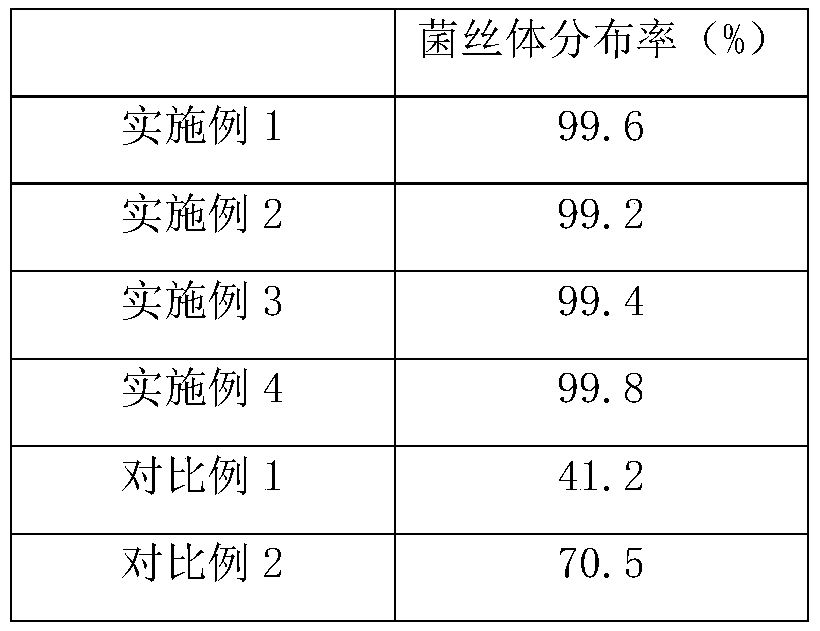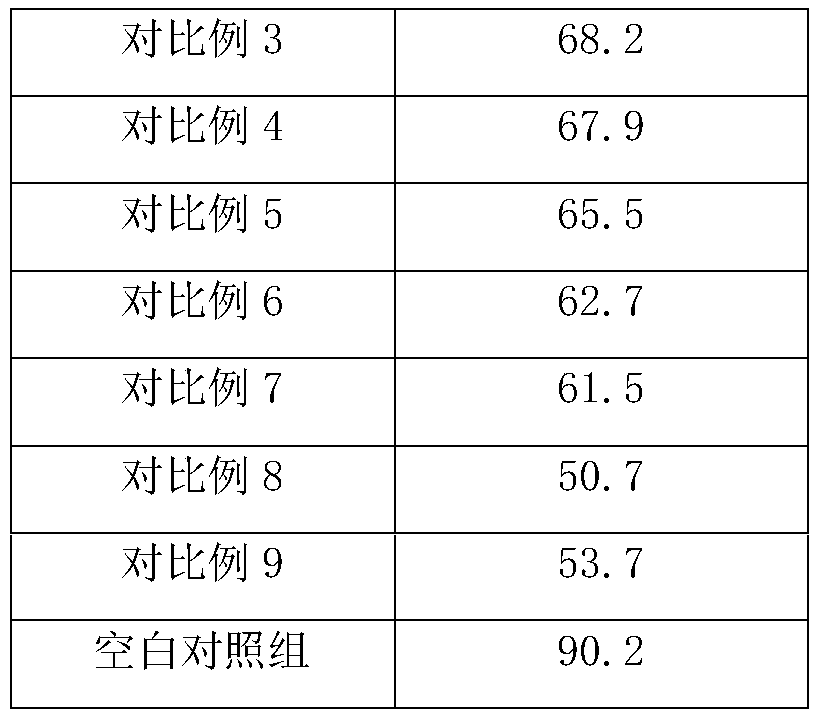Morchella esculenta culture medium based on residues from Australian tea tree essential oil processing and making method of morchella esculenta culture medium
A technology for processing residues, Morchella cultivation, applied in directions such as plant cultivation, botanical equipment and methods, cultivation, etc., can solve problems such as exhaustion, high incidence of insect pests, pesticide residues, etc., achieves reduction of production costs, and simple production technology , the effect of improving the matrix structure
- Summary
- Abstract
- Description
- Claims
- Application Information
AI Technical Summary
Problems solved by technology
Method used
Image
Examples
Embodiment 1
[0033] A morel cultivation substrate based on Australian tea tree essential oil processing residue
[0034] (1) Prepare raw materials: 100 parts of Australian tea tree essential oil processing residue, 15 parts of waste crop fermentation material, 10 parts of fly ash, 8 parts of buckwheat husk, 5.5 parts of palm leaves, 10 parts of xylitol residue, 10 parts of soybean meal cake, 1.0 parts tea leaves, 15 parts loam soil, 0.0065 parts trace elements;
[0035] Wherein, the trace element is a composition made by mixing potassium dihydrogen phosphate, calcium carbonate, calcium sulfate, and sodium selenate at a ratio of 10:4:2:0.1; the abandoned crops are crop stalks, bagasse, corncobs, Composition obtained by mixing tobacco stems and farm manure according to the ratio of 10:4:3:6:10; the production method of the waste crop fermentation material: crush crop straw, bagasse, corncobs, and tobacco stems and put them into the fermentation tank , then add farmyard manure to it and mix ...
Embodiment 2
[0041] A morel cultivation substrate based on Australian tea tree essential oil processing residue
[0042] (1) Prepare raw materials: 120 parts of Australian tea tree essential oil processing residue, 20 parts of waste crop fermentation material, 15 parts of fly ash, 12 parts of buckwheat husk, 8.0 parts of palm leaf, 15 parts of xylitol residue, 15 parts of soybean meal cake, 2.0 parts of broken tea leaves, 20 parts of loam soil, 0.0075 parts of trace elements;
[0043] Wherein, the trace element is a composition made by mixing potassium dihydrogen phosphate, calcium carbonate, calcium sulfate, and sodium selenate at a ratio of 12:5:6:0.3; the abandoned crops are crop stalks, bagasse, corncobs, Composition obtained by mixing tobacco stems and farm manure according to the ratio of 15:8:7:10:20; the production method of the waste crop fermentation material: crush crop straw, bagasse, corncobs, and tobacco stems and put them into the fermentation tank , then add farmyard manur...
Embodiment 3
[0049] A morel cultivation substrate based on Australian tea tree essential oil processing residue
[0050] (1) Prepare raw materials: 105 parts of Australian tea tree essential oil processing residue, 16 parts of waste crop fermentation material, 12 parts of fly ash, 9 parts of buckwheat husk, 6 parts of palm leaves, 11 parts of xylitol residue, 12 parts of soybean cake, 1.2 parts of tea leaves, 17 parts of loam soil, 0.0068 parts of trace elements;
[0051] Wherein, the trace element is calcium sulfate; the abandoned agricultural crops are tobacco stems; the production method of the abandoned agricultural crops fermented material: the crop stalks are pulverized and put into a fermentation tank to obtain the initial material; After being pressed to a water content of 32% and sterilized, the obtained solids are waste crop fermentation materials; during the above-mentioned fermentation period, water is poured and stirred in the fermentation tank at intervals of 53 hours, and th...
PUM
 Login to View More
Login to View More Abstract
Description
Claims
Application Information
 Login to View More
Login to View More - R&D
- Intellectual Property
- Life Sciences
- Materials
- Tech Scout
- Unparalleled Data Quality
- Higher Quality Content
- 60% Fewer Hallucinations
Browse by: Latest US Patents, China's latest patents, Technical Efficacy Thesaurus, Application Domain, Technology Topic, Popular Technical Reports.
© 2025 PatSnap. All rights reserved.Legal|Privacy policy|Modern Slavery Act Transparency Statement|Sitemap|About US| Contact US: help@patsnap.com


